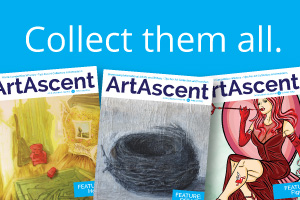Kesja Dabrowska
Everest
Supposedly
there comes a rainbow after rain
So where the hell
is mine hiding…
With its 8850 meters of height, Mount Everest is the highest mountain above sea level. Freezing temperatures, constant winds, and sudden storms make its environment unsuitable for life. Everest became a sharp symbolic image in the poetry of Kesja Dabrowska.
The emotional potential of nature inspires Kesja. Meteorological phenomena such as rainbows and storms blend with the changing seasons and the summer or winter days’ hot and cold climates. However, nothing in her poetry is literal: everything becomes a metaphor to speak of moods, an observation of her sentimental flow. The poem Everest refers to the subject of cold, exploring it on a physical, instinctive, emotional level. So, rainbows, radiant and positive days, are hidden or can be counted on the fingers of one hand, overshadowed by heavy years of storms and thunders. The warmth of a soft summer afternoon suddenly chills, becoming as spiky as an ice stalactite. It gets lost in the winter of her life. Dark periods of life, when you feel alone, helpless, hopeless, transfigure into icy peaks, like those of Everest, lonely and treacherous. The bitter cold can overwhelm the traveller, which can get lost.
The work of Kesja as a poet is the daily expression of the situations of life and mind. Pandemic and the state of health emergency greatly influenced her writing style and content, primarily modifying her mentality. The impact is not just on a day-to-day level, but it affects a different way of seeing and relating to the world. In this manner, driven by the urgency of getting to the substance of a matter, her poetic style has been intensely purified. It tends towards simple and essential forms, working on evocativeness. Kesja’s poetry acts as an attempt to reflect and draw a connection between the darker and more ambiguous side of poetry and the more explanatory and narrative one of prose. The lucid, visionary world of Edgar Allan Poe influenced her writing since her teenage years, providing with the same sense of foreboding and anguished apprehension. But also, famous poets such as Sylvia Plath and Rupi Kaur inspire her poetry, especially in the metaphorical and emotional use of natural elements and in the simple and immediate literary style.
Kesja Dabrowska is renowned as an illustrator and art practitioner in Greater Manchester, UK. She won several honours and awards both as an illustrator and a writer. She works as an illustrator of books for children and curates live projects. Her propensity to work with images as an art enthusiast makes her poetry incredibly visual and imaginary—an identifiable style, anything but cold.
Kesja Dabrowska is the Gold Writer of the ArtAscent Cold call for writers. To see the full body of work and profile, get a copy of the ArtAscent Art & Literature Journal Cold issue.




